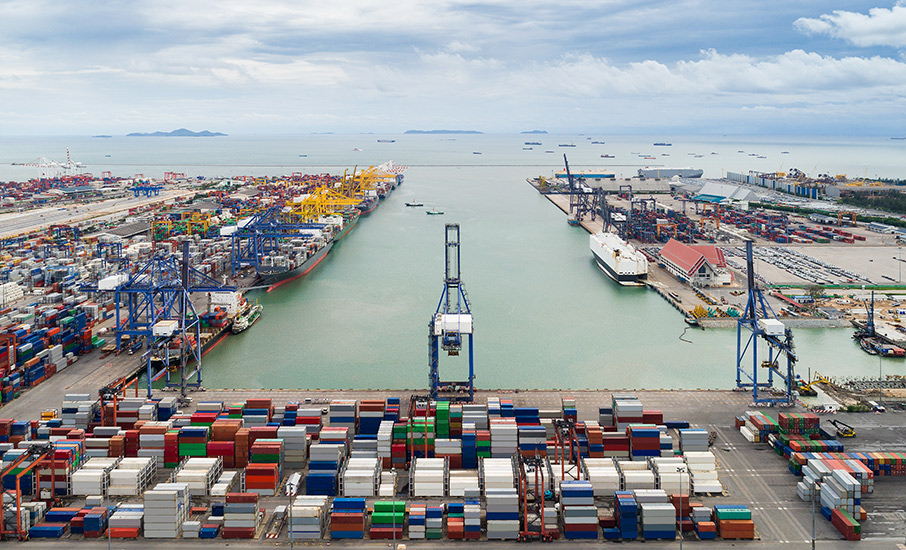Africa’s commercial ports should invest in revamping their enterprise applications and digitalising their operations as part of the multi-billionaire dollar capacity expansion projects underway across much of the continent. Such investments in technology hold the key to improving the industry’s utilisation of assets such as berths, cranes, terminal tractors and people.
That’s according to Thabo Ndlela, non-executive Director, IFS Africa, who says the projected growth in cargo volumes at African ports as well as the planned investments in capacity expansion bring opportunities for ports to invest in technology that reduces operational costs, boosts utilisation of existing infrastructures, enhances productivity and streamlines business processes.
Per Lloyd’s List, Africa accounts for just 3% of world container traffic. But a growing consumer market in Africa, China’s demand for commodities and the availability of capital for infrastructure projects has triggered investment in port construction and improvement projects across the continent, from Nigeria to Kenya to South Africa. By some estimates, at least $50 billion has been poured into Africa’s ports over the past decade with more to come.
However, many ports in Africa are battling with challenges such as insufficient container storage space, long container dwell time, a rapid increase in container traffic and poor performance of inland transport infrastructure such as rail and road. According to the World Bank, shipping a container from Africa in 2011 took, on average, twice as long shipping from India and about six times as slow as through an American port.
Driving innovation and efficiency
Vincent Elfring, Director at IFS business partner Envecon, says: “Africa’s ports face the same major challenges as ports elsewhere in the world: a trend towards bigger vessels as shipping companies cascade more tonnage from the East-West to the African trades; a need to improve productivity, reliability and safety using automated systems; and consolidation of shipping lines, which increases competition between ports to retain and attract fewer, newly-merged shipping lines customers.”
As the industry squares up to these challenges, it should look for ways to leverage technology to drive innovation and efficiency, says Elfring. “Projects where we have worked jointly with IFS in Europe, South East Asia, Africa and Latin America highlight the fact that an industry once known for conservatism is now starting to seize the opportunities of digital transformation,” he adds.
“Many port operators worldwide are investing in robotics – including automated quay cranes, stacking cranes, shuttle carriers and gates – for higher productivity and reliability.” Other technology areas with increased interest are trade and customer Internet portals, cloud hosting, business intelligence and analytics and distributed ledgers like blockchain for storing and sharing documents within the supply chain.
ERP/EAM – a digital foundation
Taking full advantage of these digital technologies begins with rolling out enterprise resource planning (ERP) and enterprise asset management (EAM) systems tailored to the specialised needs of the industry.
“Port and terminal operators worldwide are increasing their investments in ERP solutions. They understand the value of having an integrated solution to manage the planning, execution and continuous improvement of their business processes. We also see more demand to connect and integrate these ERP solutions with suppliers, customers and the port authorities,” says Elfring.
For ports and terminals, optimal use of assets is a key factor in high performance. Ports and terminals are increasingly based on the concept of driving assets to the maximum, while improving performance in the yard, quayside and gate arena. The end goal is to continuously improve berth moves per hour and gross moves per hour. A well-designed IT solution can keep assets from ageing by implementing a regular maintenance basis to keep machines in good shape without jeopardising operations.
Maintenance cost of assets is one of the biggest operational expenses in any port and terminal, next to concession fees and labour cost. The basic requirements of a terminal could be monitored by an off-the-shelf EAM – however, traditional ERP and EAM have often failed to deliver desired business outcomes in this highly specialised industry. Thus, the industry needs software designed for its requirements.
Adds Ndlela: “We can leverage data to improve predictive maintenance, reduce mean time between failures, cut asset management costs and increase service levels. Our solutions are designed for asset-intensive industries such as ports and terminals, with a view to maximising productivity, reducing maintenance costs and downtime, and enhancing ROI.
“The next generation of Internet of Things technologies will enable us to take this to the next level. We are collaborating with Envecon for capturing real-time sensor, controller and location data from all major terminal assets like quay and yard cranes, and terminal tractors.”
Elfring concludes: “African ports need to manage their assets in a way that ensures high productivity and improves reliability while delivering service levels that match the best in the world. Ensuring this requires a well-designed IT platform that provides them with the visibility, scalability and performance they need to cater for the rapid pace of volume growth in Africa’s commercial ports.”
Click below to share this article

